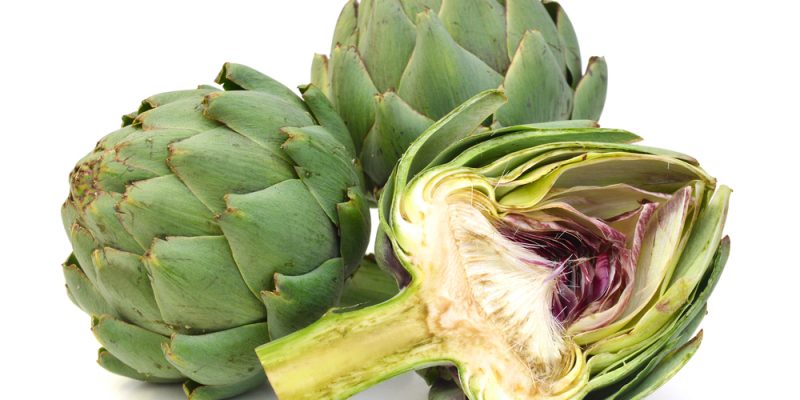Spotlight on Artichokes
People often disregard artichokes because the process of eating them can seem too hard. They do look a little intimidating, with their hard, green outer leaves, but lovers of artichoke say that no other vegetable compares.
But there’s a few deceptive things about artichokes. Firstly, they’re not actually a vegetable, instead they’re part of the thistle family. And secondly, their green leaves are actually petals.
The edible part of the artichoke is a flower bud before the flower comes into bloom. The heart of the artichoke, or the core, lies at the base of the young petals.
There are several varieties of artichokes available in Australia, the most common is the Green globe or Violetto.
Origins
The artichoke is native to the Mediterranean area, originating possibly in Sicily or nearby Tunisia, known as Carthage in ancient times. It was first mentioned as a garden plant in the 8th century BC by Homer and Hesiod. It also has records of use as a food among the ancient Greeks and Romans.
The Dutch introduced artichokes to England in the 1600s and then it made its way to the U.S. in the 19th century.
Did you know?
In the 16th century, eating an artichoke was seen as somewhat scandalous for women, as it was considered an aphrodisiac and reserved for men only.
Health Snapshot
- In past centuries the artichoke was used as a diuretic. It was even thought to have deodorising properties and was considered an ideal breath freshener.
- Research has found that the phytochemical cynarin in artichokes stimulates the taste buds. It’s also responsible for bringing sweet flavours to any foods you eat immediately after eating an artichoke.
- The artichoke contains next to no fat, and also has a host of vitamins and minerals including magnesium, chromium, manganese, potassium, phosphorus, iron, and calcium.
- Artichokes are rich in fibre, with one medium artichoke supplying a hearty 6 grams.
Selection & Storage
Select artichokes that are heavy and compact for their size, this is a good indication that they will be moist and fleshy.
Choose ones with bright olive green colour or a minimum of darkening on the outer petals. Make sure they have closed or nearly closed petals that are thick and sturdy.
Petals that are wide open mean that the artichoke is overripe and may be touch and less flavourful.
Store artichokes in a perforated plastic bag in the fridge soon after purchase. They will keep for 4 or 5 days. Cooked artichokes are quite perishable. After cooking, store leftovers in a plastic bag in the fridge for no more than 2 to 3 days.
You can buy marinated artichoke hearts in the jar or tin at your local supermarket or deli. These will last much longer than fresh but are have a more intense flavour.
It can be quite a process preparing fresh artichokes, so here’s a great step-by-step of how to clean, trim, and prepare them.
Foodie musts
Here’s a great recipe for marinating your own artichokes.
Or try a tomato and artichoke bake, or lemon artichoke chicken.
For purists who like to eat the artichoke by itself, here’s 3 delicious dipping sauces to go along with it.
